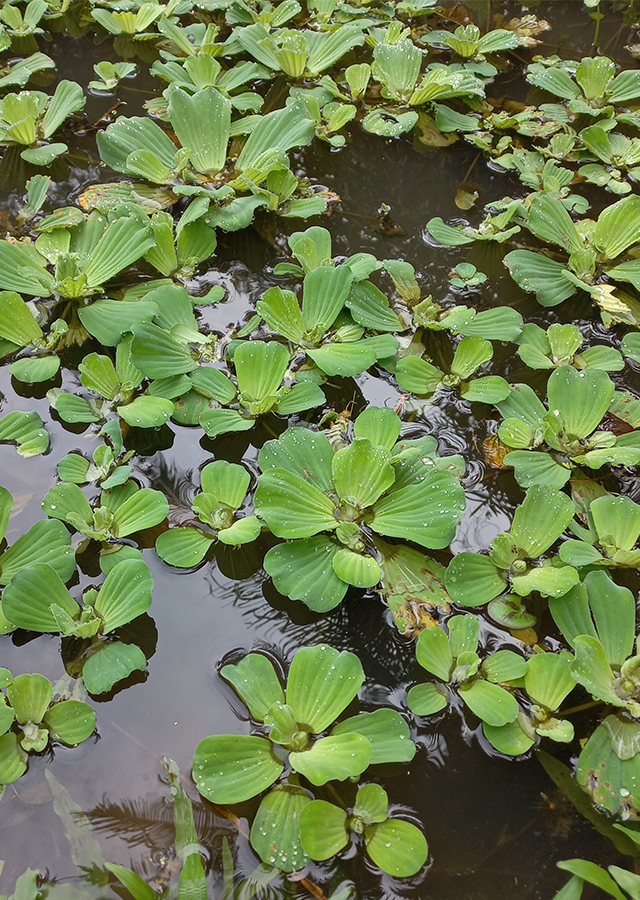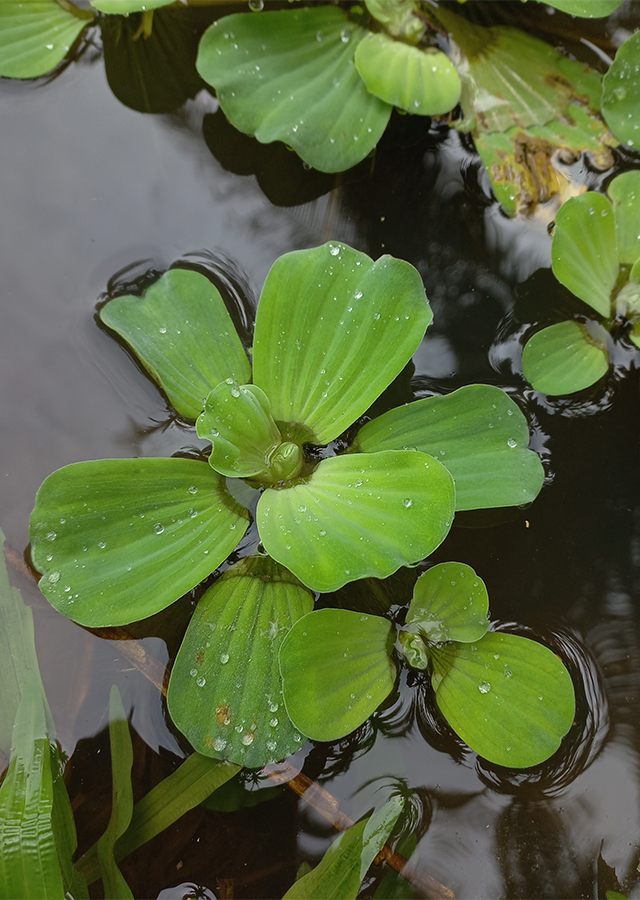Traditional Herbs from Salvinia molesta
pain_pain
- Prepare enough fresh kiambang leaves.
- Boil the fresh leaves until boiling.
- Let it cool, wash the boiled water on the affected part.
What is Salvinia molesta Looks like??



Parts of Salvinia molesta that could be used
- Leaf
Salvinia molesta Distribution
Kiambang is a plant native to southeastern Brazil and northern Argentina, and has spread widely throughout the world over the last 50 years and can be found in Africa, the Indian subcontinent, Southeast Asia, Australia, New Zealand, the southern United States and several Pacific islands. . Kiambang is a plant whose life floats on the surface of the water. This plant can grow well in tropical and subtropical areas. Usually this plant is often found in swamp waters, rice fields, rivers and lakes. This aquatic weed has been used for ornamental plants, mulch, compost, animal feed, paper making, handicrafts and biogas generation. Improving the quality of water in waters can also be done by utilizing this aquatic plant. According to Adi (2008), the leaves contain flavonoids, polyphenols and tannins, so they can be used as medicine.Agroecology of Salvinia molesta
Salvinia molesta prefers tropical, sub-tropical or warm temperate regions of the world and grows best in still or slow-moving bodies of water including ditches, ponds, lakes, rivers and slow-moving canals. In calm water, Salvinia forms a stable floating layer. Kiambang grows at air temperatures of 10-40 (ºC). Optimal growth occurs in nutrient-rich situations, pH 6-7.5, with water temperatures between 20 and 30 ºC, especially if the nitrogen source is ammonium ions (NH4+) rather than ions. nitrate (NO3-). The growth of S. molesta is enhanced by high light intensity, relatively high water temperature, and plenty of available nutrients.
Morphology of Salvinia molesta
- The roots do not have true roots but the submerged leaves function as roots.
- Irregularly branched, pubescent stems. Has a horizontal rhizome (which is located below the surface of the water) and two types of leaves (floating and submerged).
- Leaves \u00a0There are three whorls (two floating and one submerged). The floating leaves are positioned opposite each other with a round to oval shape. On the upper surface the leaves have a row of cylindrical papillae has four hairs at the distal end (each consisting of one row of cells). The cage-like structure at the tip of the hair is an effective air trap that provides buoyancy in the water. The papillae at the tip of the hair and the upper surface of the plant are water repellent, while the It is on the lower surface of the leaves that attracts water. This difference in water repulsion and attraction is what maintains the plant's position on the water surface. Salvinia leaves are light green, often with brownish edges in mature plants, and with a characteristic fold in the middle. These plants show great morphological variation depending on habitat conditions (such as space and nutrient availability), and range from slender floating specimens with leaves less than 1.5 cm long to leaves up to 6 cm thick.
- Egg-shaped spore sacs containing the spores infertile. Microsporangia: stalked, with one mass (microspore cluster); massulae with 64 microspores. Megasporangia: sessile, with one megaspore; megaspores up to 2 mm.
Cultivation of Salvinia molesta
This plant reproduces vegetatively, with floating branches that easily break and form new plants. Individual plants (ramets) may consist of a piece of stem with two floating 'leaves' (fronds) and a third 'leaf', which is modified into a hairy 'root' and remains submerged. The spread of this plant occurs during floods and also during water movement caused by water currents or wind and through the disposal of pond waste. It can also be spread by animals (over long distances by water birds), vehicles and boats.
Salvinia molesta, more details :
Chemical Content of Salvinia molestaTannins, lignin, saponins, quinones, terpenoids, steroids, flavonoids alkaloids, phenolic compounds, glycosides (6'-O-(3,4-dihydroxy benzoyl)-beta-D-glucopyranosyl ester, 4-O-beta-d-glucopyranoside -3-hydroxy methyl benzoate), methyl benzoate, hypogallic acid, caffeic acid, paeoniflorin, and picuroside.
Benefits of Salvinia molesta
Reduces fever, helps cure flu, whooping cough, aches and pains (rheumatism), swollen bumps (bruises), swelling (edema), painful urination (dysuria), gonorrhea, allergic itching (urticaria), itching (pruntus) , dysentery, skin diseases such as boils and eczema.
Simplisia of Salvinia molesta
Another Facts for Salvinia molesta :
Synonym of Salvinia molestaSalvinia adnata Desv.
Habitus of Salvinia molesta
Aquatic Plants. Aquatic plant, annual, 30 cm long, 5 cm wide
Habitat of Salvinia molesta
- Water Plants
No comments:
Post a Comment